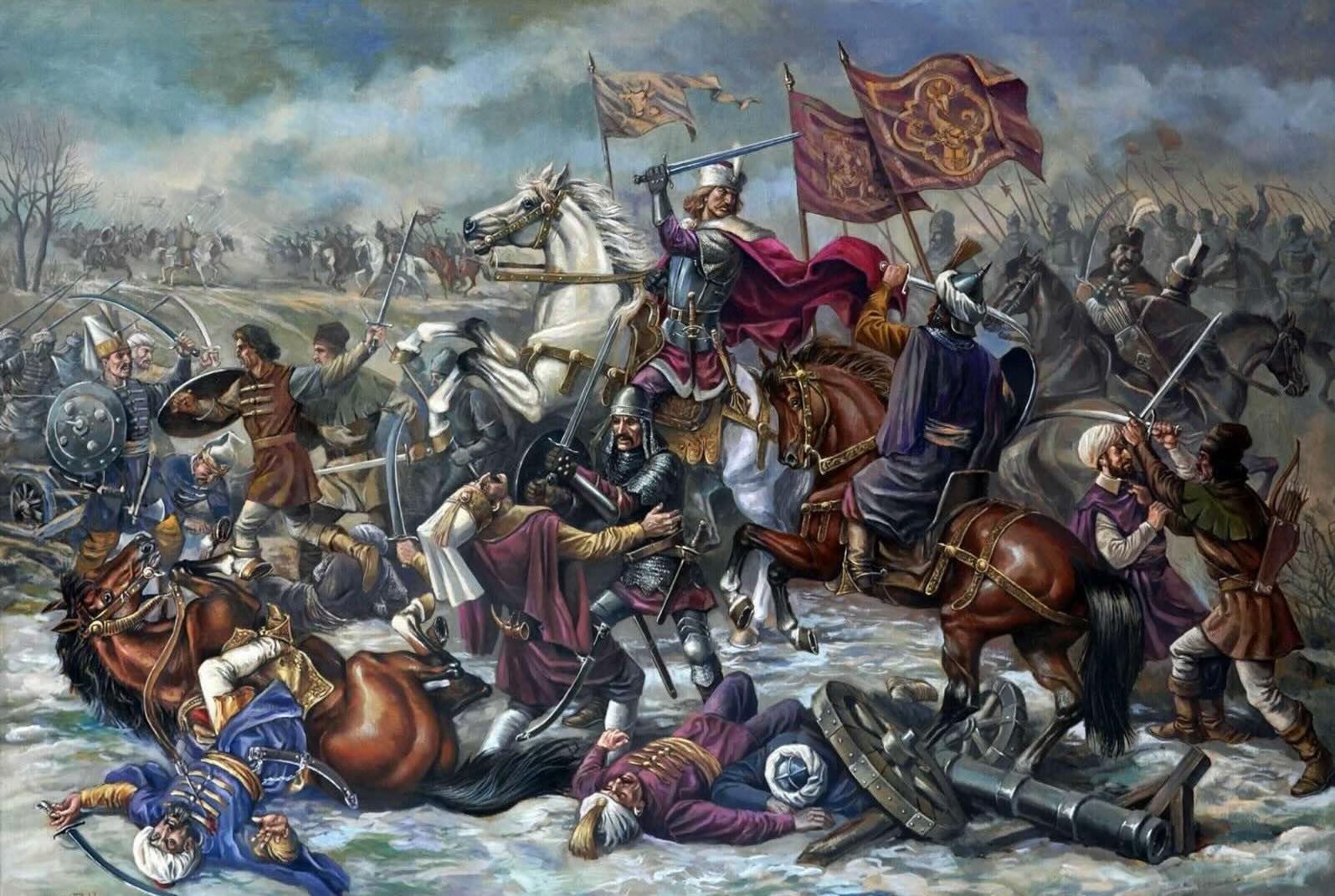
Did you know the Ottoman-Moldavian War of 1476 was a pivotal clash between the Ottoman Empire and the Principality of Moldavia? This conflict saw the legendary ruler Stephen the Great defending his land against Sultan Mehmed II, the conqueror of Constantinople. The war was marked by intense battles, strategic maneuvers, and a fierce determination to maintain sovereignty. Stephen's victory at the Battle of Vaslui in 1475 was a significant moment, but the Ottomans returned stronger the following year. Despite the eventual Ottoman victory, Moldavia's resistance became a symbol of national pride. Curious about the key events, figures, and outcomes of this historical struggle? Dive into these 25 fascinating facts to uncover the rich tapestry of bravery, strategy, and resilience that defined the Ottoman-Moldavian War of 1476.
Key Takeaways:
- Moldavia's victory in the Ottoman-Moldavian War of 1476 boosted national pride and identity, showcasing the power of resilience and strategic tactics in the face of adversity.
- The war's impact on culture and history was significant, with Stephen the Great becoming a national hero and the defeat leading to reforms within the Ottoman Empire.
The Ottoman-Moldavian War of 1476: A Clash of Titans
The Ottoman-Moldavian War of 1476 was a significant conflict between the Ottoman Empire and the Principality of Moldavia. This war showcased the resilience of Moldavia under the leadership of Stephen the Great and the might of the Ottoman Empire led by Sultan Mehmed II.
Key Players in the War
Understanding the main figures involved helps grasp the war's dynamics.
- Stephen the Great: The ruler of Moldavia, known for his military prowess and strategic acumen.
- Sultan Mehmed II: The Ottoman Sultan, also known as Mehmed the Conqueror, famous for capturing Constantinople in 1453.
The Prelude to War
Several events and tensions led to the outbreak of hostilities.
- Ottoman Expansion: The Ottomans were expanding their territory in Eastern Europe, threatening Moldavia's sovereignty.
- Moldavian Resistance: Moldavia resisted Ottoman suzerainty, leading to increased tensions.
- Previous Conflicts: Prior skirmishes and battles between the two powers set the stage for a larger conflict.
Major Battles and Strategies
The war featured several key battles and strategic maneuvers.
- Battle of Valea Albă (White Valley): One of the most significant battles, where Stephen the Great faced the Ottoman forces.
- Guerrilla Tactics: Stephen employed guerrilla tactics to harass and weaken the larger Ottoman army.
- Fortifications: Moldavia's use of fortified positions helped delay and disrupt Ottoman advances.
The Role of Geography
Geography played a crucial role in the conflict's outcome.
- Carpathian Mountains: These mountains provided natural defenses for Moldavia.
- Dense Forests: Moldavia's forests were used for ambushes and surprise attacks.
- Rivers and Marshes: These natural barriers hindered the movement of the Ottoman forces.
The Aftermath of the War
The war's conclusion had lasting impacts on both empires.
- Moldavian Victory: Despite being outnumbered, Moldavia managed to secure a strategic victory.
- Ottoman Retreat: The Ottomans were forced to retreat, marking a rare setback for Mehmed II.
- Strengthened Moldavian Identity: The victory bolstered Moldavian national pride and identity.
Cultural and Historical Impact
The war left a lasting legacy on the region's culture and history.
- Stephen the Great's Legacy: He became a national hero and a symbol of resistance.
- Ottoman Reforms: The defeat led to military and administrative reforms within the Ottoman Empire.
- Historical Chronicles: The war was documented in various chronicles, preserving its memory for future generations.
The Role of Alliances
Alliances and external support influenced the war's dynamics.
- Polish Support: Moldavia received some support from the Kingdom of Poland.
- Hungarian Involvement: Hungary, another regional power, also played a role in the conflict.
- Wallachian Neutrality: Wallachia, another principality, remained neutral, affecting the balance of power.
Technological and Tactical Innovations
Both sides employed various innovations during the war.
- Firearms and Cannons: The use of firearms and cannons was becoming more prevalent in warfare.
- Siege Warfare: The Ottomans used advanced siege techniques, though they were less effective in Moldavia's terrain.
- Logistical Challenges: Supplying and maintaining large armies posed significant logistical challenges for both sides.
The Human Cost of War
The conflict had a profound human impact.
- Casualties: Thousands of soldiers and civilians lost their lives during the war.
- Displacement: Many people were displaced, leading to humanitarian crises in the region.
The Lasting Impact of the Ottoman-Moldavian War of 1476
The Ottoman-Moldavian War of 1476 left a significant mark on history. This conflict showcased the resilience of Stephen the Great and his Moldavian forces against the might of the Ottoman Empire. Despite the Ottomans' superior numbers and resources, Stephen's strategic brilliance and the determination of his troops managed to halt their advance. This war not only highlighted the tactical prowess of both sides but also underscored the importance of unity and leadership in the face of overwhelming odds. The aftermath saw Moldavia maintaining its autonomy for a while longer, influencing the region's political landscape. Understanding this war gives us a glimpse into the complexities of medieval warfare and the enduring spirit of those who fought for their homeland. The lessons from this conflict continue to resonate, reminding us of the power of strategy, courage, and resilience.
Frequently Asked Questions
Was this page helpful?
Our commitment to delivering trustworthy and engaging content is at the heart of what we do. Each fact on our site is contributed by real users like you, bringing a wealth of diverse insights and information. To ensure the highest standards of accuracy and reliability, our dedicated editors meticulously review each submission. This process guarantees that the facts we share are not only fascinating but also credible. Trust in our commitment to quality and authenticity as you explore and learn with us.
